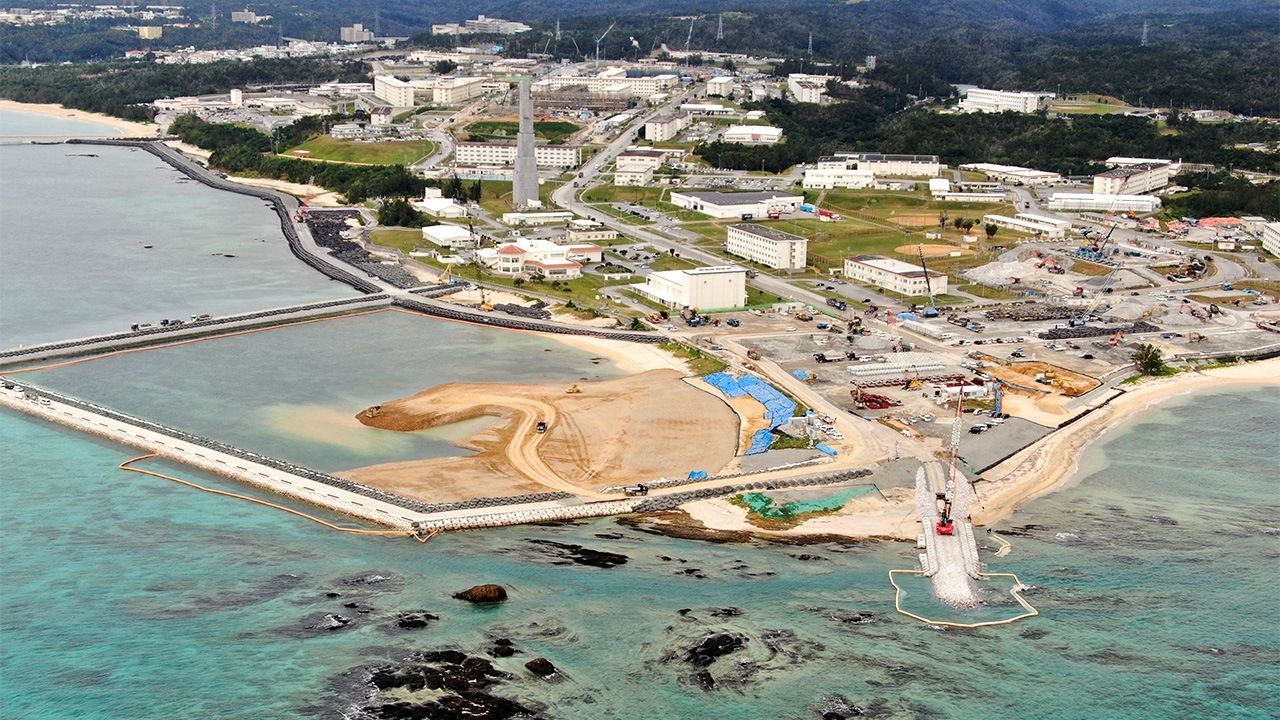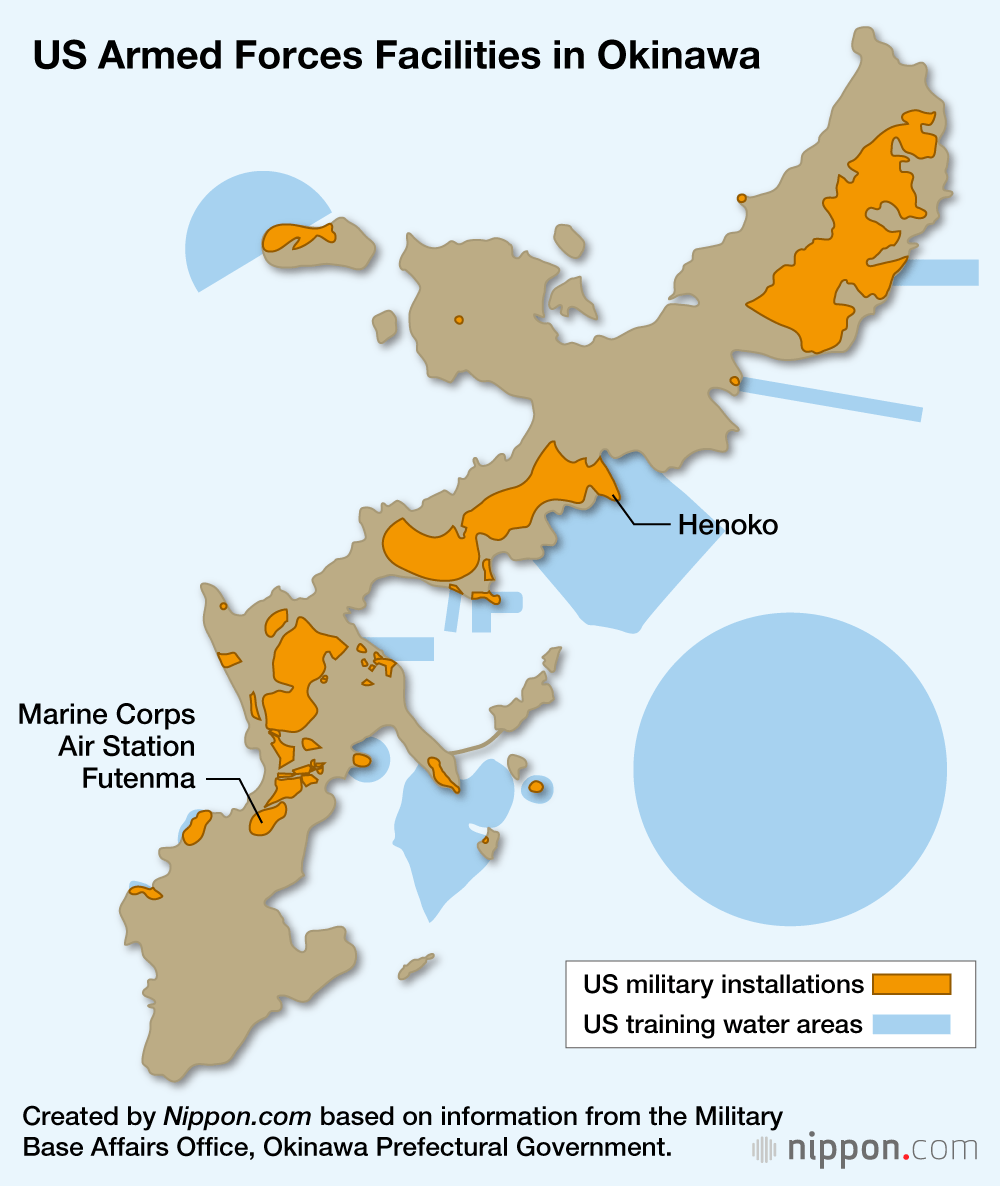
Okinawans Oppose Government-Backed US Base Move in Nonbinding Referendum
Politics- English
- 日本語
- 简体字
- 繁體字
- Français
- Español
- العربية
- Русский
In an Okinawan prefectural referendum held on February 24, 2019, more than two-thirds of voters stated that they were opposed to the relocation of a US military base within their prefecture from Futenma, a facility in Ginowan, to the Henoko district of Nago. There was a 52.48% turnout for the poll, in which voters could mark themselves as in support, in opposition, or neutral on the idea of relocating the base.
Feb. 24 Referendum Results
| For move | 114,933 | 19.10% |
| Opposed to move | 434,273 | 72.15% |
| Neutral | 52,682 | 8.75% |
| Total turnout | 601,888 | 100.00% |
Notes: Turnout was 52.48% of the total 1,153,591 eligible voters in the prefecture. Opposition votes reached 37.65% of the total electorate, clearing the 25% mark requiring the Okinawa governor to formally report the results to the national governments involved.
More than 20 years have passed since the announcement that the United States would return all territory used for the Marine Corps Air Station Futenma in Okinawa to Japan. While the military base has been a point of contention in subsequent gubernatorial and national elections, progress toward a solution has been minimal. As more than one quarter of the total Okinawan electorate—434,273 of 1,153,591 citizens—voted against the move, under local ordinance Governor Tamaki Denny will report the result to Prime Minister Abe Shinzō and US President Donald Trump.
The referendum has no binding legal force, and the national government has indicated it will go on with construction work for the Henoko base. The contention between the Okinawa prefectural government and Prime Minister Abe’s administration is set to continue.
Historical Background to the Futenma Base Dispute
| September 1995 | A 12-year-old Okinawan schoolgirl is raped by three US servicemen. In October tens of thousands of Okinawans take part in a protest rally. |
| April 1996 | Prime Minister Hashimoto Ryūtarō and US Ambassador Walter Mondale announce that Marine Corps Air Station Futenma in the city of Ginowan will revert entirely to being Japanese territory. |
| September 1996 | In a prefectural referendum, 89% of voters, amounting to more than half of the total electorate, agree that the US military presence in Okinawa should be reduced. |
| November 1997 | The government proposes a plan to build a heliport offshore from Henoko in the city of Nago to replace the Futenma base. |
| December 1997 | In a municipal referendum, a majority of voters in Nago express their opposition to the relocation of the Futenma facility to Nago. |
| February 1998 | Okinawa Governor Ōta Masahide announces his opposition to the relocation plan. |
| November 1998 | Gubernatorial election: Inamine Keiichi, who favors the plan, defeats Ōta to become the new governor of Okinawa. |
| November 1999 | Governor Inamine declares Henoko, Nago, as the site for relocation of the facility, which will be for joint military and civilian use. |
| December 1999 | The cabinet officially approves the relocation plan. |
| November 2002 | Gubernatorial election: Inamine is reelected as governor. |
| November 2003 | US Secretary of Defense Donald Rumsfeld reportedly describes Futenma as “the most dangerous base in the world,” after observing it from the air. The base is near the center of Ginowan and surrounded by buildings. |
| August 2004 | A military helicopter crashes into a building at Okinawa International University, Ginowan, near the Futenma base. |
| November 2006 | Gubernatorial election: Nakaima Hirokazu, who endorses relocation, is elected as governor. |
| July 2009 | Democratic Party of Japan leader Hatoyama Yukio states that a replacement facility should “at least be outside of the prefecture.” In September, Hatoyama is elected as prime minister. |
| May 2010 | Hatoyama abandons the idea of relocation outside the prefecture as Japan and the United States reaffirm commitment to the Henoko plan. |
| November 2010 | Gubernatorial election: Nakaima is reelected as governor, having changed his stance to opposition to the relocation plan. |
| October 2012 | The United States begins deployment of Osprey military aircraft at Futenma. |
| December 2012 | Abe Shinzō is elected prime minister as the Liberal Democratic Party wins back power from the DPJ. |
| December 2013 | Governor Nakaima approves landfill work for the Henoko base. |
| November 2014 | Gubernatorial election: Onaga Takeshi defeats Nakaima on a platform of opposition to the relocation plan, and becomes the new governor. |
| December 2016 | An Osprey aircraft assigned to Futenma crashes off the coast of Nago. |
| October 2017 | A US military transport helicopter assigned to Futenma crashes and bursts into flame on private land in the village of Higashi. |
| December 2017 | A window frame weighing some 7.7 kilograms falls from a US military transport helicopter assigned to Futenma and lands in the grounds of an elementary school in Ginowan, Okinawa Prefecture. |
| July 2018 | Governor Onaga announces he will withdraw permission for landfill work granted by his predecessor. |
| August 2018 | Governor Onaga dies of pancreatic cancer. |
| September 2018 | Gubernatorial election: Onaga’s anointed successor in the anti-base movement Tamaki Denny is elected governor. |
| February 2019 | More than 70% of voters oppose the relocation in a prefectural referendum. |
Compiled by Nippon.com based on information from the websites of Okinawa Prefecture, Ginowan, and Nago, as well as various media sources. Yellow highlighting indicates movements favorable toward relocation, while purple indicates movements toward opposition.
(Originally published in Japanese. Banner photo: Ongoing landfill work offshore at Henoko, Okinawa, in preparation for construction of a new US military base. The US base Camp Schwab is at center. Photograph taken on February 12, 2019. © Jiji.)
